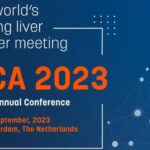In September 2023, a retrospective multicentric study led by Professor Jun Zhu from Peking University Cancer Hospital and Institute was published in the prestigious international academic journal ——Haematologica (IF=11.047). The title of the study is "Evidence of cure for extranodal nasal-type natural killer/T-cell lymphoma with current treatment: an analysis of the CLCG database". This study evaluates the statistical “cure” of ENKTCL in the modern treatment era.These findings have a high potential impact on clinical practice and patients’ perspective.
The research on Extranodal nasal-type natural killer/T-cell lymphoma (ENKTCL) has seen significant advancements in recent years, with improved treatment modalities enhancing patient survival rates. The study titled “Evidence of Cure for Extranodal Nasal-Type Natural Killer/T-Cell Lymphoma with Current Treatment: An Analysis of the CLCG Database” represents a landmark investigation into the potential for a statistical “cure” for patients suffering from this aggressive lymphoma. The China Lymphoma Collaborative Group (CLCG) database provided a comprehensive dataset for analysis, covering clinical data from 1,955 ENKTCL patients treated between 2008 and 2016 with non-anthracycline-based chemotherapy and/or radiotherapy. This vast dataset allows for a nuanced understanding of the disease’s treatment outcomes in the contemporary clinical setting.
The study’s revelation that an estimated 71.9% of ENKTCL patients treated with current modalities might be considered cured is groundbreaking. This cure fraction significantly surpasses previous expectations for a disease once considered almost invariably fatal. The definition of “cure” in this context is particularly poignant, indicating a point at which the patient’s mortality risk aligns with that of the general population. This alignment occurs approximately 4.5 years post-treatment, a timeframe that now serves as a benchmark for patient monitoring and long-term care planning.
The median survival time for those not achieving this “cured” status, at 1.1 years, starkly contrasts the improved outcomes for the majority, highlighting the aggressive nature of ENKTCL and the critical importance of effective treatment strategies. Furthermore, the study’s identification of clinical factors associated with cure probability—such as B symptoms, disease stage, and lactate dehydrogenase levels—offers valuable insights into patient risk stratification and tailored treatment planning. Notably, the finding that elderly patients (>60 years) share a similar cure fraction to younger individuals challenges previous assumptions about age as a prognostic factor in ENKTCL treatment outcomes.


